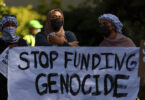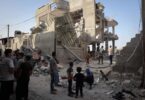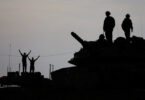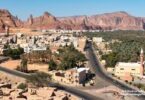Konstantin Skorkin
Donbass needs to prepare for a long existence as a Russian military protectorate like Transnistria or South Ossetia. Local elites are waiting for the optimization of the management system on the part of Moscow, and society – creeping integration with Russia
The times when messages from Donbass were at the top of world news are in the past. However, a new aggravation in Russian-Ukrainian relations and the threat of a resumption of hostilities make us again pay attention to how events are developing in this region.
The self-proclaimed republics of the DPR and LPR, which were started as a kind of temporary project, survived and even became stronger. They managed to form their own political systems and new elites, ready to ensure the long-term existence of Donbass as a Russian protectorate. And the doctrine of the “special way” of Donbass has every chance to come true, despite the extinction of the idea of the Donbass irredenta.
Bureaucrats instead of passionaries
Over the past seven years, the face of the self-proclaimed republics has changed dramatically. The “heroic” stage of the Donbass elite as a whole ended with the assassination in 2018 of the leader of the DPR, Alexander Zakharchenko. Instead of passionaries, an alliance of the bureaucracy and the siloviki turned out to be in power, incorporating the surviving leaders of the “Russian spring” into its ranks.
“How many people are in the power structure now who raised a protest in Donbass and feel personal responsibility for what is happening? On one hand can be counted ” – complains in his telegrams channel is one of the founding fathers of the DNI Alexander Khodakovsky.
In both republics, a power vertical with a pseudo-democratic facade was built. Numerous restrictions on political activity are attributed to the martial law of the republics (a curfew is still in effect in Luhansk and Donetsk). Public policy is being replaced by a behind-the-scenes struggle between various groups, in which Russian curators are also involved.
The almost uncontested elections held in 2018 in both republics were won by the heads of state approved by Moscow: Denis Pushilin in the DPR and Leonid Pasechnik in the LPR. Only local parties of power and their spoilers (respectively, Peace in Luhansk and Luhansk Economic Union in the LPR, Donetsk Republic and Free Donbass in the DPR) were allowed to participate in the elections to local parliaments (“people’s councils”).
Party lists were formed from representatives of local elites with experience in Ukrainian pre-war sample policy: the People’s Council of LC headed by a former activist of the youth wing of the Party of Regions Denis Miroshnichenko and DNI parliament – ex-MP from the Communist Party, Vladimir Bidovka. At the same time, local communist parties officially registered in the republics, despite the support of Kazbek Taisayev, a member of the Presidium of the Central Committee of the Communist Party of the Russian Federation, were not allowed to participate in the elections.
Authoritative veterans of the separatist movement are trying to form the only opposition to the local leaders, however, the authorities are hindering the registration of their political projects: the Republican Party of Donbass, created by Andrey Purgin (one of the founding fathers of the DPR and the head of its People’s Assembly in 2014-2015), was denied registration.
Opposition telegram channels play an important role – in fact, the only uncensored sources of information. Critics of the LPR-DPR authorities paradoxically remind in their arguments the nationalist opposition of Ukraine: the government is concerned only with personal enrichment, prone to opportunism, while the main goal – defense against an existential enemy – is carried out slipshod and worries only true patriots. Despite the fact that this criticism comes from the standpoint of “patriots of Donbass”, the authorities are harshly suppressing any disloyalty.
In the summer of 2020, during the strikes of miners in the LPR, the authorities blocked the Russian Vesna website for covering the protests. And at the end of the year, the well-known separatist blogger Roman Manekin, who criticized the Daeshian security forces, was arrested as a “Ukrainian spy.”
Change of curators
The popularity of the current leaders of the LPR and DPR is difficult to measure – there are no reliable ratings for this. Media “personality cults” are difficult to take seriously, since the local media are under the complete control of the authorities. According to a survey by the Institute of the Future and the Zerkalo Nedeli newspaper in 2019, residents of the uncontrolled Donbass trusted the DPR leader Pushilin much less than the Russian TV presenters Vladimir Solovyov and Olga Skabeeva.
The low standard of living hardly adds to the popularity of the local authorities. Republican enterprises cannot pay salaries to their employees for months, and if they promise to increase them, they do not forget to cut various additional payments and benefits. The increase in utility bills by 20% also tested the loyalty of the population. For a long time, low tariffs (lower than in Ukraine and in the neighboring Rostov region of the Russian Federation) were an important part of the myth about the “nationality” of the republics.
The deterioration of the economic situation is associated with a decrease in Russian subsidies – it is they who keep the republics afloat. Rumor has it that Moscow is thinking of optimizing governance in its de facto protectorates – changing leaders or merging the two republics into one entity. People of Medvedchuk or, on the contrary, purely Russian political managers can be appointed to replace the current leadership (there is already such an example – the government of the DPR is headed by ex-deputy governor of Irkutsk Vladimir Pashkov).
The option of uniting the republics has been discussed for a long time, but local elites refuse it under various pretexts. Now between the DPR and LPR there is a state border with customs. The authorities of the republics fear that their status will downgrade and they will lose some of the preferences if, under strong pressure from Russia, intra-Donbas integration begins.
This issue paradoxically reproduced the pre-war situation when the Luhansk and Donetsk elites, although they were allies within the Party of Regions, were bitter competitors at the level of local economic and power ambitions. Then the takeover of Luhansk by the stronger Donetsk was a nightmare for local leaders.
“Two republics are two leaders, and one large republic is one leader. And no one wants to lose their place. The elites of Lugansk have always been weak and lost to Donetsk, and they understand: now Donetsk, more impudent ones, will come and they will simply devour us, ” admits the former DPR Foreign Ministry official Konstantin Dolgov.
The situation has also worsened at the enterprises controlled by the Vneshtorgservis company, which is associated with the fugitive Ukrainian oligarch Sergei Kurchenko, the former financier of the Yanukovych family and the unofficial owner of the republics’ economy. In 2017, the Donbass assets of the oligarch Rinat Akhmetov were under the control of his structures after their “nationalization” of the LPR-DPR. At the same time, Kurchenko’s management exploited the enterprises predatory and ineffectively.
Now “Vneshtorgservice” begins to transfer assets back to the balance of the republics. According to unofficial information, the Donetsk Metallurgical Plant and the Yenakiieve Coke Plant returned the DPR. Due to the fact that Kurchenko begins to withdraw from the Donbass business, there are rumors that his enterprises will be transferred to the management of the structures of Viktor Medvedchuk, which will increase his influence in the uncontrolled Donbass.
Ukrainian special services claim that companies associated with the leader of the Opposition Platform participated in the supply of coal from the territory of the LPR-DPR. This was one of the reasons for the sanctions against Medvedchuk’s TV channels, allegedly financed through operations in the uncontrolled territory.
The replacement of Kurchenko with Medvedchuk may also have a political dimension: Moscow is finally writing off representatives of the circle of former President Yanukovych, who at one time actively tried to return to Ukrainian politics, and relies on the leader of the Opposition Platform as the leader of the pro-Russian party in Ukraine and the main opponent Zelensky.
Creeping integration
Although in the foreseeable future Russia is unlikely to directly include Donbass in its composition, propaganda of integration processes plays a key role in the internal agenda of the republics. Russian cities are becoming twin cities of Donbas, the unification of legislation on the Russian model is announced (the introduction of the Labor Code, SNILS, and so on).
The most advantageous topic remains the simplified granting of Russian citizenship: by January 2021, about 400 thousand residents of the republics (more than 10% of the population) received it . At the same time, the authorities of the LPR-DPR are stepping up internal passportization; holders of passports of the republics can obtain simplified citizenship of the Russian Federation. By the end of 2020, 600 thousand people (out of 2.2 million of the population) received DPR passports , in the LPR – 500 thousand (out of 1.4 million).
However, the majority of residents still have Ukrainian passports, which creates a loyalty problem for the leaders of the republics. So far, they are recognized in the LPR-DPR on a par with local and Russian ones, but they plan to abandon the circulation of Ukrainian documents by 2025. To this end, the DPR is developing a law on citizenship, copied from similar laws in Abkhazia and South Ossetia.
While the discussion is underway, there are unofficial rumors that it will soon become impossible to do business or make real estate transactions without the passports of the republics. This will put in a difficult position the owners of apartments who were forced to leave the uncontrolled Donbass for the Ukrainian territory in 2014-2015, especially since the head of the DPR Pushilin recently issued a decree on the alienation of “ownerless property” in favor of the republic.
At the same time, the republics are undergoing a process of maximum distancing from Ukraine. In the summer of 2020, the DPR and LPR proclaimed Russian as the only state language (before that, the republics had official bilingualism), and made appropriate changes to the constitution. Obviously, these decisions were a propaganda response to the new Ukrainian language legislation, which reduced the scope of the Russian language.
In conditions of political stagnation and economic stagnation, the authorities of the republics are trying to revive the atmosphere with loud propaganda events. Such was the forum “Russian Donbass” with the participation of Russian politicians and TV propaganda stars. The forum presented the doctrine of the “Russian Donbass” – a description of the historical claims of Donbass for self-determination in the form of “Russian national states” of the LPR and DPR, which, on the one hand, should become an assembly point for the Russian-speaking regions of Ukraine, on the other, an “experimental platform for the Russian future” …
In fact, we are talking about a slightly updated ideology of the “Russian spring” of 2014. Its supporters expected a parade of sovereignties of regions disloyal to the Kiev government, which was supposed to lead to the creation of a confederal “Novorossiya” and a national renaissance in Russia itself. However, seven years later, it is obvious that the potential of the “Novorossian movement” has dried up. And the money for the maintenance of experimental sites has diminished.
In practice, the new doctrine is rather a way to blackmail Kiev, which refuses to comply with the Minsk agreements. For example, the doctrine includes clause 6 on the restoration of the “historical borders” of the LPR and DPR within the Luhansk and Donetsk regions.
For those residents of the republics who have received passports of the Russian Federation, individual integration into Russian life is often a more attractive option. Moreover, the Russian authorities encourage the replenishment of the demographic decline at the expense of ethnically and culturally similar migrants. Ukraine remains one of the largest sources of emigration to Russia.
This also applies to the elite of the republics, which are gradually merging into the politics of the Russian Federation. Former acting the head of the DPR Dmitry Trapeznikov became the city manager of Elista, and the ex-head of the Federation of Trade Unions of the LPR Oleg Akimov became an assistant to the deputy of the State Duma Andrey Kozenko.
So far, these are isolated cases, but the more Russia plunges into isolationism, the more the managers from the “gray territories” are in demand. On the one hand, they will be completely dependent on their patrons, with no special roots in the system. On the other hand, since they are initially in a “sanctioned” situation, they will not think about accounts in the West and European real estate – exemplary loyalists.
What’s in store for Donbass?
After some hopes related to the change of power in Kiev in 2019, the peace process is again at an impasse. Zelensky’s administration, initially under pressure from the national-patriotic opposition, and now based on its own guidelines, actually refuses to accept Donbass on the terms prescribed in the Minsk agreements.
Kiev and the unrecognized republics, behind which Moscow stands, are developing unrealistic “road maps” with mutually exclusive requirements. The role of European mediators is becoming more formal, and the last hopes of resolving the conflict are dashed.
The possibility of reintegrating Donbass into Ukraine, as it is understood in Moscow, is postponed until the hypothetical coming to power in Kiev of pro-Russian forces. This explains the strengthening of Medvedchuk’s positions in the region, whose party is the favorite in the part of Donbass controlled by Ukraine.
The Kremlin continues to optimistically believe in such a turn, but despite all the victorious ratings of the Opposition Platform, there is a consensus in Ukraine against the revenge of the pro-Russian party, approved by the West. The lightning-fast defeat of Medvedchuk’s media empire is a good confirmation of this.
This means that Donbass needs to prepare for a long existence as a Russian military protectorate like Transnistria or South Ossetia. Local elites are waiting for the optimization of the management system on the part of Moscow, and society – creeping integration with Russia. Within the republics, these measures will be perceived as putting things in order, an alternative to the former customs of the wild field, and the normalization of life.
Strengthening Russian positions in the region will allow the DPR and LPR to be used as a lever of pressure on Kiev. Donbass is turning into an armored train standing on a siding, which the Kremlin can use if foreign policy circumstances require it.
Courtesy: (carnegie.ru)






